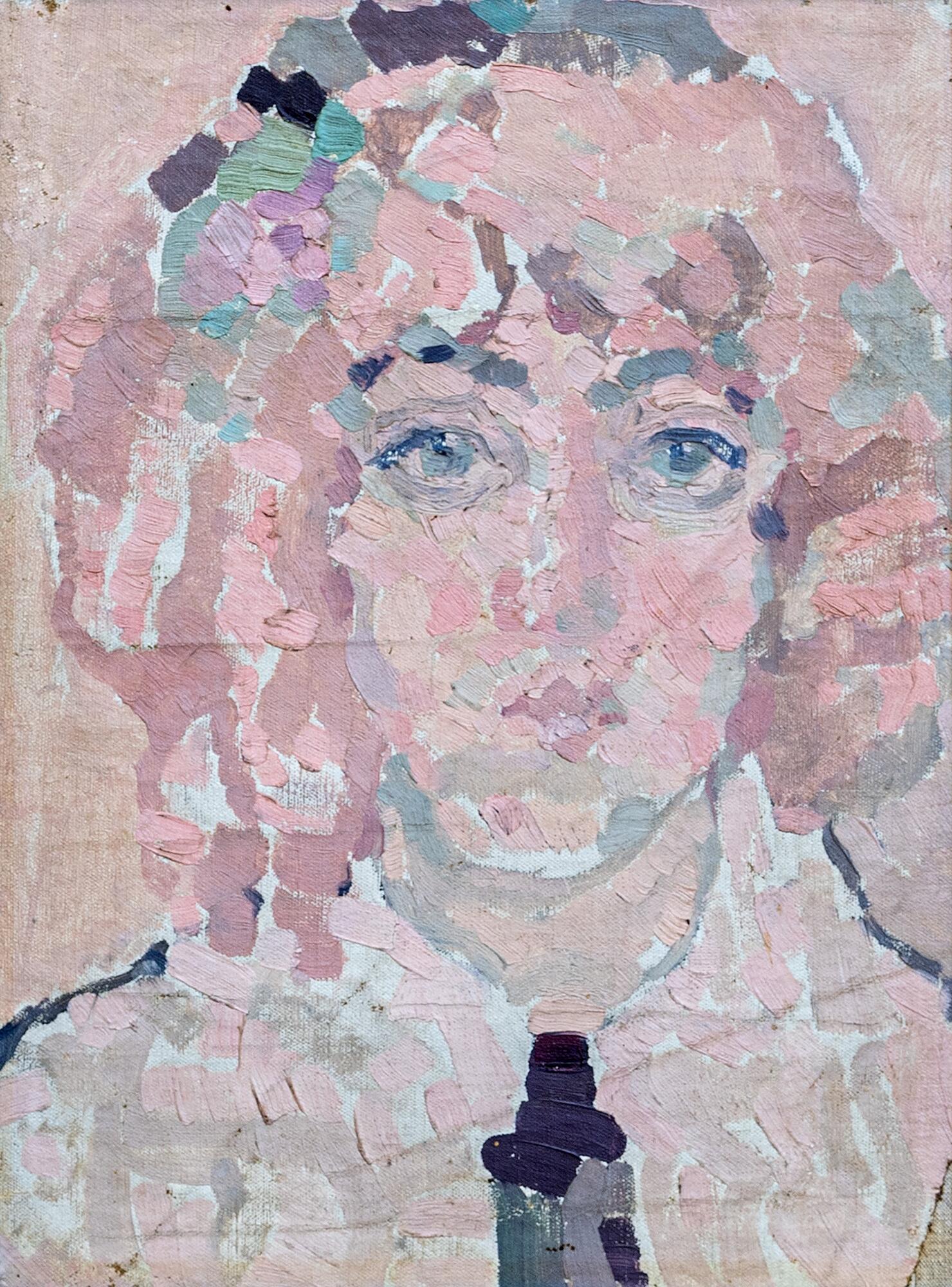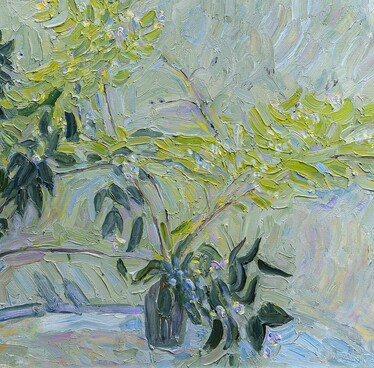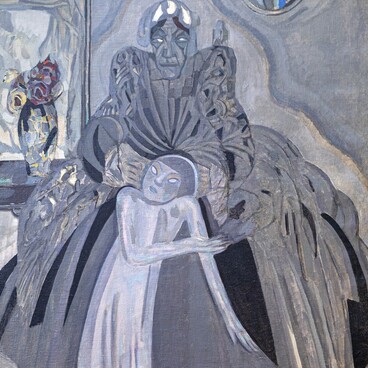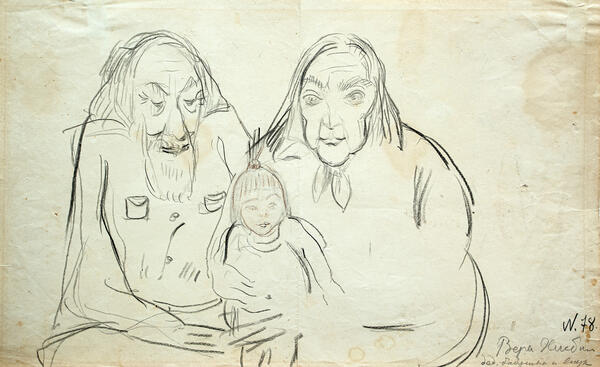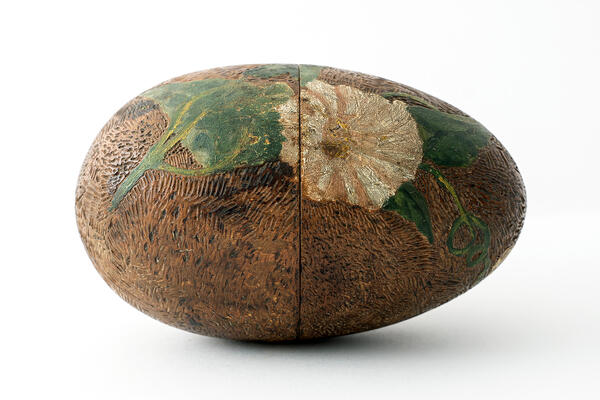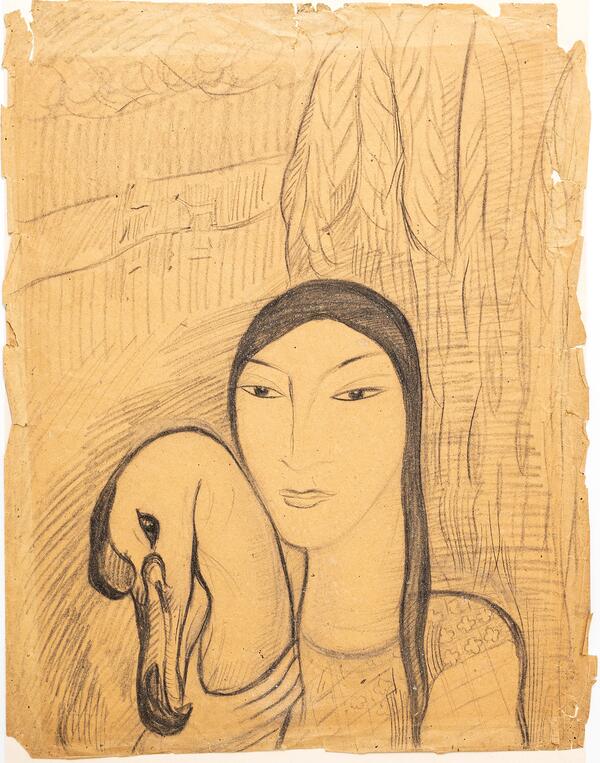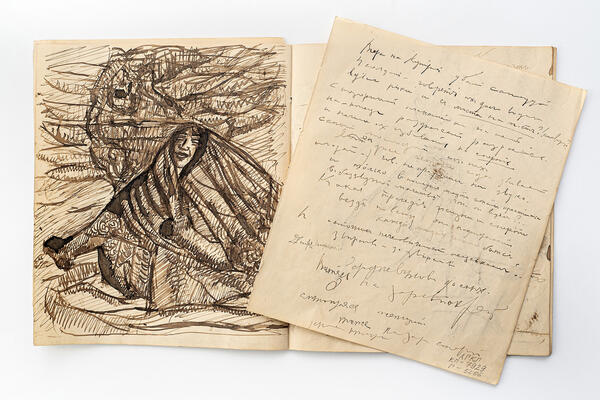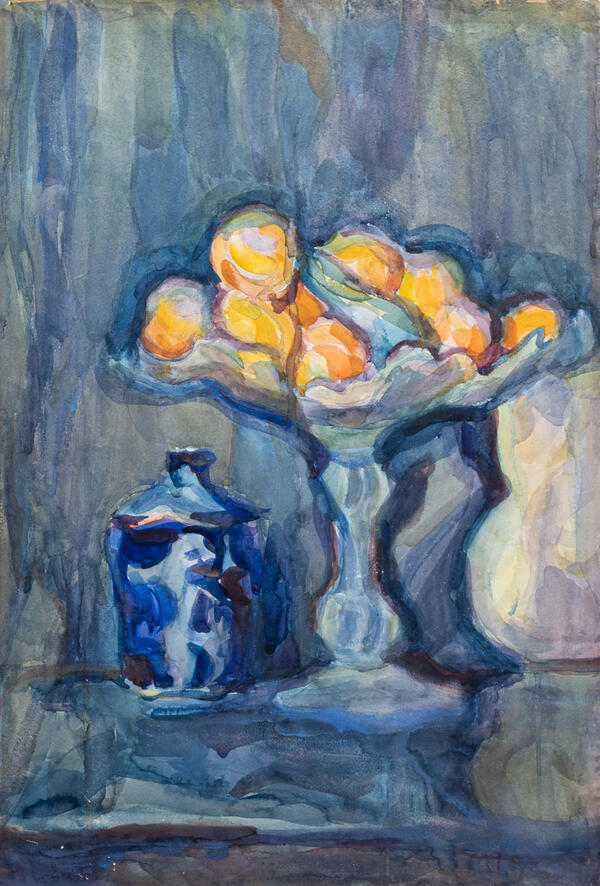The Khlebnikov family had five children: Boris, Ekaterina, Viktor (Velimir), Alexander and Vera. The father, Vladimir Alexeyevich Khlebnikov, an ornithologist, forester and local historian, was a good draftsman and passed on his talent to the children, especially his youngest daughter.
Vera Vladimirovna (1890–1941) was born near Astrakhan and showed interest in painting from an early age: her older relatives noted that she loved pictures more than dolls. The future artist spent her childhood in the Mordovian village of Pomaev, Simbirsk Governorate. Her mother, Ekaterina Nikolaevna, often invited local residents to visit, and the children got acquainted with Mordovian folklore.
In 1898, the family moved to Kazan. Vera entered the Mariinskaya Women’s Gymnasium and later recalled how “creepy” it felt to be in “large lifeless classrooms with whitewashed windows… after the green lily-of-the-valley forest.”
In September 1905, Vera Khlebnikova entered the Kazan Art School as a non-matriculated student. She recalled this stage of her life with enthusiasm, “paints, palettes, brushes… Studies… with fearless brush strokes… Paint on my nose and cheeks.” However, her peculiar manner of painting and indifference to academic rules was not appreciated at school. The same story was repeated at the Kyiv Art School (she enrolled in 1908).
Her brother Velimir, with whom Vera was especially close, convinced her to come to St. Petersburg and enroll in the school of the Society for the Encouragement of the Arts. In 1910, she began her training under the mentorship of Professor Yan Tsionglinsky (Ciągliński). Vera was called “a young lady with squares” for using thick brush strokes, reminiscent of Pointillism.
Her self-portrait painted at the age of nineteen is also indicative of her impasto brush strokes.
The square strokes do not merge together, but rather resemble a mosaic or inlay. Two details, in particular, attract the viewer’s attention. The dark school tie emphasizes the beginning of a new, creative life; in addition, this is almost the only case where the artist is depicted with an accessory (a hairpin) in her hair.
Vera Khlebnikova also wrote prose. Her vision of
life echoed Velimir Khlebnikov’s philosophy, as is indicated in their letters.
In one of them, the poet claims that it is their correspondence that awakens in
him the ability to write easily and freely. Some of Vera Vladimirovna’s works,
including the drawing “Squirrel” she made as a young girl, Khlebnikov kept
until the end of his life and took with him on numerous trips.
